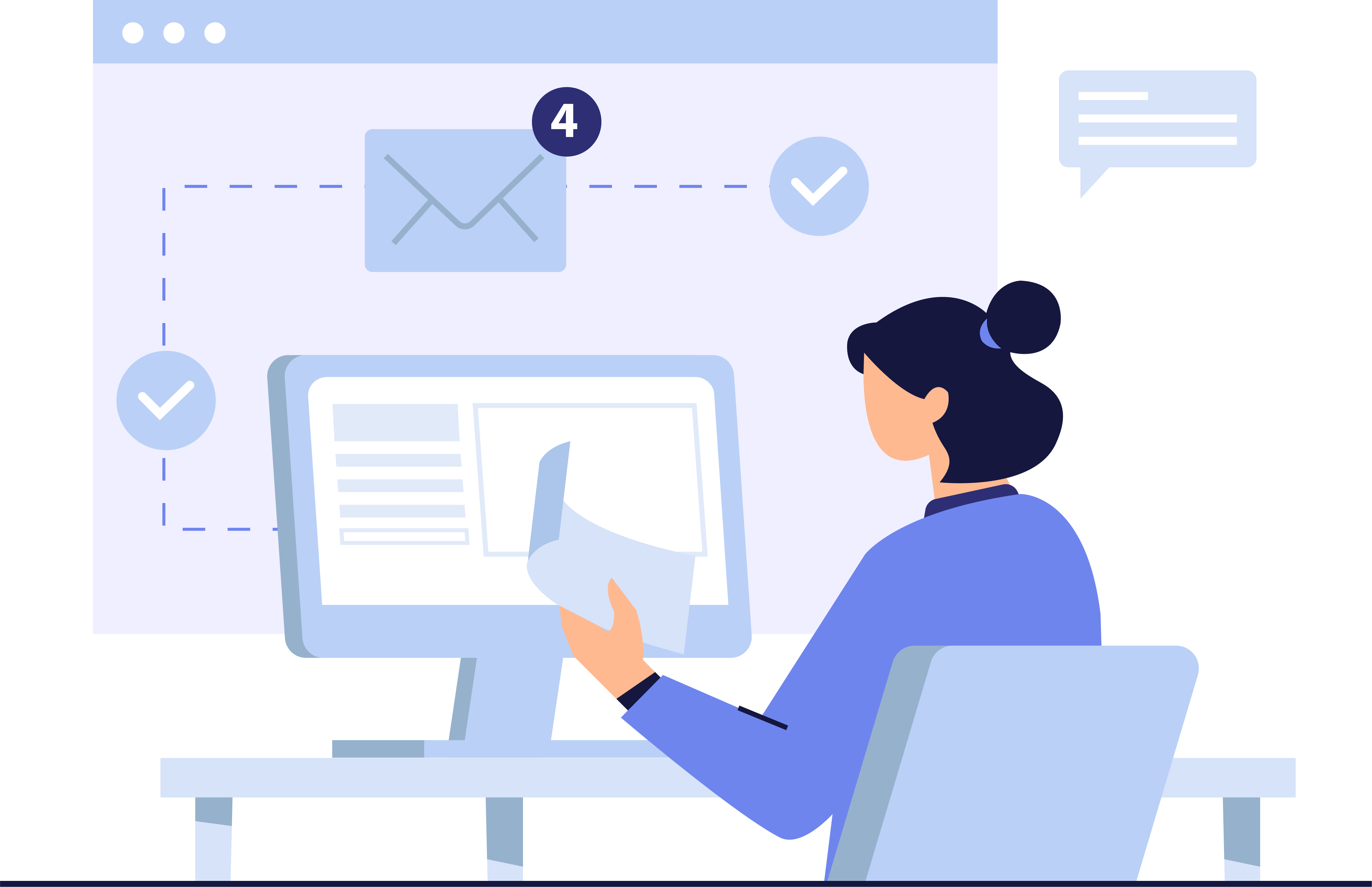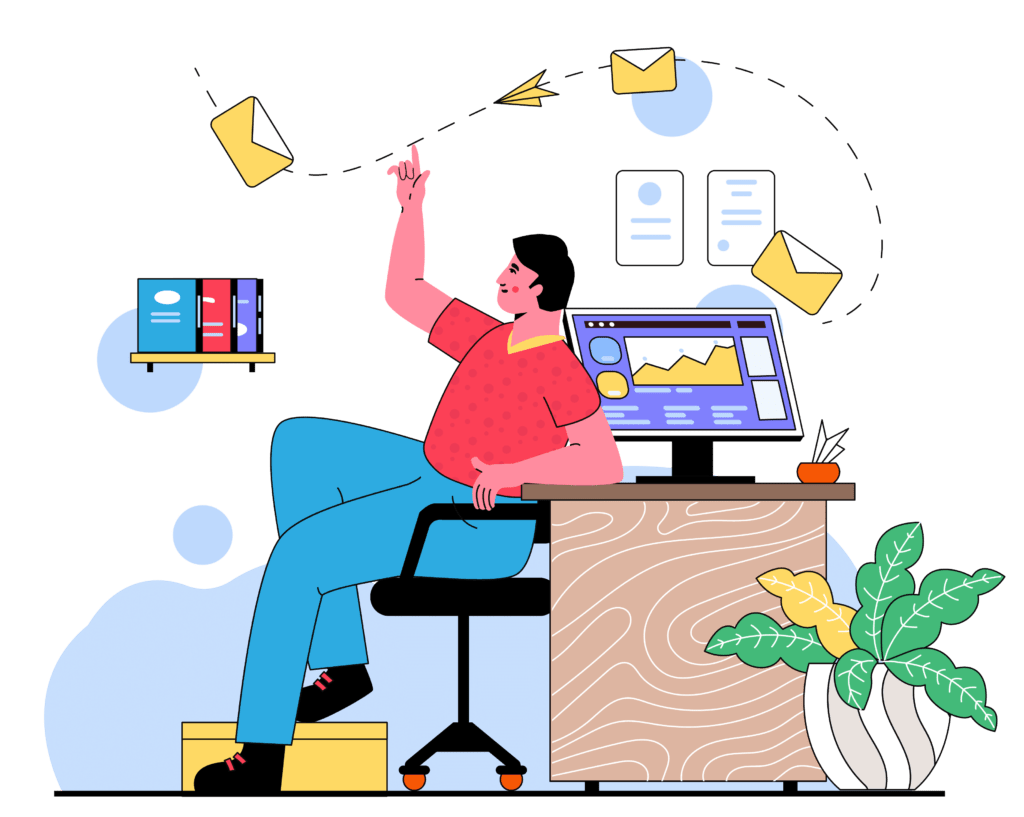BACKGROUND
As a company with a compact sales team – just two full-time salespeople and a founder still involved in deals – we were constantly balancing growth with limited resources. The core issue wasn’t ambition -it was bandwidth.
Leads were increasing thanks to content and inbound channels, but we didn’t have the time or manpower to follow up with everyone effectively. We weren’t qualifying fast enough, and we couldn’t afford to waste cycles on low-quality leads. Forecasting was based on gut feeling, and admin tasks fell through the cracks.
Instead of buying bloated tools we didn’t need, we built a lightweight AI solution ourselves, designed specifically to optimize every stage of the funnel – from prospecting to closing.
THE SITUATION BEFORE AI
The sales team faced a common challenge: how to scale operations without sacrificing personalization, response time, or deal quality.
Before implementing AI, the sales process was largely manual and reactive. The team experienced:
- Inefficient Lead Management: Time was wasted chasing low-quality leads while high-potential prospects slipped through the cracks.
- Delayed Follow-Ups: Manual scheduling and tracking led to inconsistent engagement.
- Unreliable Forecasting: Revenue projections were based on incomplete or subjective data.
- No lead scoring: Every lead looked the same unless manually researched
The goal was clear: accelerate the sales cycle, improve conversion rates, and empower the sales team with smarter tools—not just more tools.
THE AI-DRIVEN SOLUTION
We didn’t need a “sales stack.” We needed an assistant!
We developed a set of simple, in-house AI tools integrated into the sales ecosystem, enhancing performance at every stage.
- 1. AI-Powered Lead Scoring
We created a script that scored new leads based on:
- Website activity (pages viewed, time on site)
- Basic enrichment (company size, industry)
- Email engagement (opens, clicks, replies)
- Past sales patterns and CRM data
Each lead was tagged as High Intent, Moderate Fit, or Low Priority, with a score from 0–100.
🟢 Impact:
- Faster qualification: we now engage top leads same-day
- Time saved: we ignore ~18% of low-fit leads we used to chase
- More focused sales effort
- 2. Auto-Drafted Follow-Up Emails
Using natural language processing (NLP), personalized email sequences were generated and adjusted based on:
- Industry-specific pain points
- Engagement history
- Buyer stage and intent signals
We always review and tweak messages before sending—but the drafts give us a solid head start.
🟢 Impact:
- Follow-up rate increased from ~45% to ~70%
- Reply rate on second-touch emails improved by ~25%
- Each rep saved 3–5 hours per week on email writing
- 3. Virtual Sales Assistant
An internal AI assistant supported sales reps with:
- Real-time recommendations during calls
- Suggested content and pitch strategies
- Objection-handling prompts tailored to lead profile
🟢 Impact:
- Shorter ramp-up time for new reps
- Stronger, more relevant sales conversations
- Higher deal conversion from tailored support
- 4. Smart Forecasting and Deal Insights
We automated a weekly pipeline review script that checks:
- Deal stage
- Last interaction date
- Activity frequency
It generates a quick forecast snapshot, assigns a risk label, and gives us an early warning when deals go quiet.
🟢 Impact:
- Shorter ramp-up time for new reps
- Stronger, more relevant sales conversations
- Higher deal conversion from tailored support
- 5. Internal Note Summarization
We added a tool that summarizes deal notes and past emails into a short internal description per opportunity. It makes it easier to prep for calls without digging through threads.
WHAT CHANGED
These tools didn’t magically close more deals – but they freed up time, cut manual work, and let us focus on higher-value activities like conversations, demos, and follow-ups.
| 📊 Metric | Before AI | After 3–4 Months |
|---|---|---|
| ⏱️ Average response time to new leads | ~36 hours | ~20 hours |
| 📬 Follow-up rate after initial contact | ~45% | ~70% |
| 📈 Forecast reliability | Low (rough estimates only) | Moderate (based on basic pipeline signals) |
| 🚫 Leads dropped due to time constraints | ~30% | ~18% |
| 🧾 Time spent on admin and manual tasks (weekly) | 8–10 hours | 5–6 hours |
WHAT WE LEARNED
- AI doesn’t need to be complex to be useful. Even basic logic can create real leverage.
- We didn’t fully automate anything. AI supported human judgment—it didn’t replace it.
- Clean CRM data is still essential. Bad inputs made early models unreliable.
- Iterate slowly. We started small, improved what worked, and didn’t rush.
CONCLUSION
With a small team, every hour and every lead counts. By building just enough AI into our workflow, we were able to:
⚡ Qualify leads faster
⏱️ Respond quicker
🗂️ Stay more organized
📈 Forecast more accurately
And we did it without hiring, outsourcing, or buying expensive tools.
READY TO TRANSFORM YOUR SALES PROCESS?
AI is no longer a futuristic concept – it’s a practical, proven tool to improve how software companies sell today. Whether you’re aiming to boost pipeline efficiency, shorten sales cycles, or gain predictive visibility into your revenue, the path forward starts with a smarter foundation.
👉 Let’s explore how AI can enhance your sales process, contact our team!









